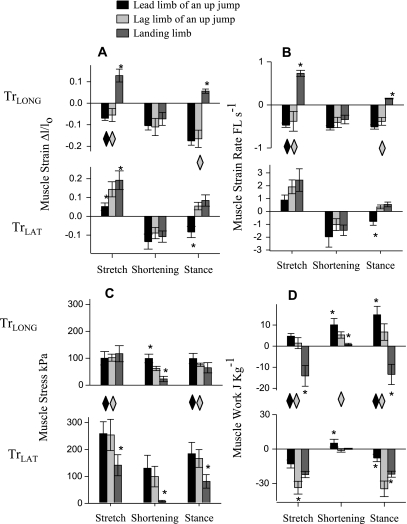Fig. 7.
Histogram showing means (±SE) across the 4 individual goats and 3 jump conditions for muscle strain (A), muscle strain rate (B), mean muscle stress (C), and muscle work (D) during TrLAT stretch, TrLAT shortening, and over net stance. *Significant difference among jump types in Tukey's HSD post hoc tests with a starting α of 0.05. ◊Significant differences between muscles with gray indicating a difference in the lag limb, and black indicating a difference in the lead limb (statistics given in Table 2). Parameter values shown in the figure are also presented in Table 4. The TrLAT absorbed substantial work as it stretched concurrent with elbow flexion and joint work absorption. In contrast the TrLONG generated work in both the lead and lag limb of upward jumps, but absorbed energy in downward jumps. This shift appeared to be mediated by changes in the relative kinematics of the elbow and shoulder.

